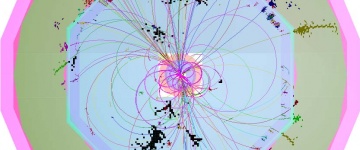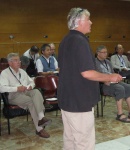In the News
-
from Science 2.023 October 2011They selected events which contained six energetic hadronic jets plus a large amount of missing transverse energy: a signature which should be contributed by the decay of supersymmetric particles, if those existed and had a mass small enough to be copiously produced.
-
from Wired21 October 2011Data from the CMS experiment is showing significant excesses of particles known as leptons being created in triplets, a result that could be interpreted as evidence for a theory called supersymmetry.
-
from APS Physics20 October 2011Researchers have demonstrated the key piece of equipment needed to produce the intense positron beams required for the next generation of particle accelerators.
-
from DESY20 October 2011Within the framework of the European project CRISP, 16 European physics research centres interlink for the first time to collaborate on central technical issues for their future research infrastructures to profit from each other.
Copyright © 2025 ILC International Development Team




